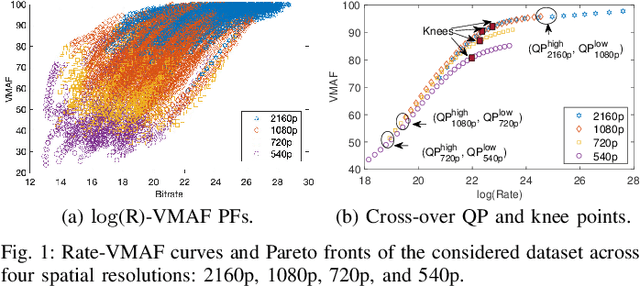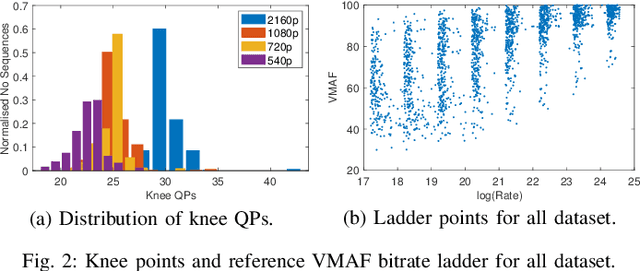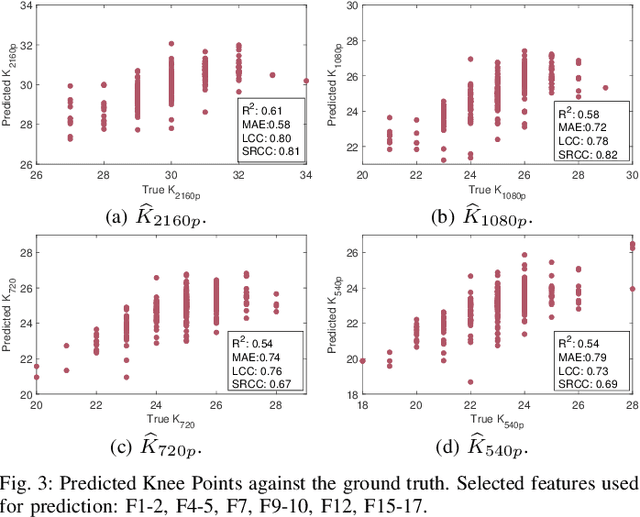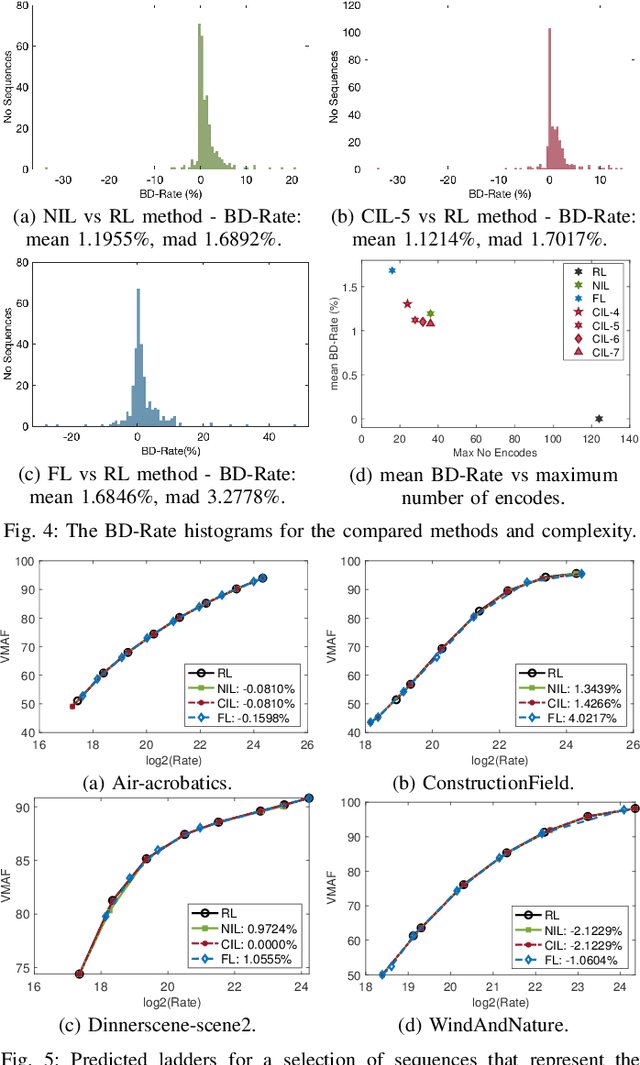VMAF-based Bitrate Ladder Estimation for Adaptive Streaming
Paper and Code
Mar 12, 2021



In HTTP Adaptive Streaming, video content is conventionally encoded by adapting its spatial resolution and quantization level to best match the prevailing network state and display characteristics. It is well known that the traditional solution, of using a fixed bitrate ladder, does not result in the highest quality of experience for the user. Hence, in this paper, we consider a content-driven approach for estimating the bitrate ladder, based on spatio-temporal features extracted from the uncompressed content. The method implements a content-driven interpolation. It uses the extracted features to train a machine learning model to infer the curvature points of the Rate-VMAF curves in order to guide a set of initial encodings. We employ the VMAF quality metric as a means of perceptually conditioning the estimation. When compared to exhaustive encoding that produces the reference ladder, the estimated ladder is composed by 74.3% of identical Rate-VMAF points with the reference ladder. The proposed method offers a significant reduction of the number of encodes required, 77.4%, at a small average Bj{\o}ntegaard Delta Rate cost, 1.12%.
 Add to Chrome
Add to Chrome Add to Firefox
Add to Firefox Add to Edge
Add to Edge